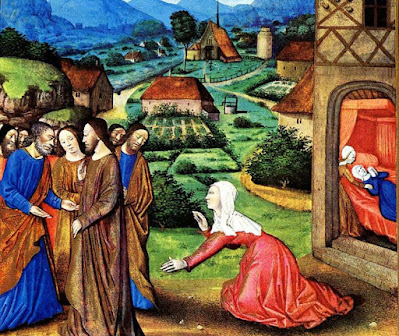St. Rose was born to parents of Spanish descent in Lima, Peru, at a time when South America was in its first century of evangelization. She was baptized with the name Isabella, but because she was an extremely beautiful young girl, she was given the nickname of Rose, because she reflected the beauty of roses.
Sometimes the saints have a love for God that is so tremendous, it drives them to some things that would seem very strange to us. And in fact, sometimes the discipline and practices of some of these things really are imprudent, but is a kind of logical carrying out of the idea that anything which might come between them and God should be rooted out. We see this with St. Rose of Lima. Because her beauty was so often admired, she was afraid she would become vain, and she worried that people would think more about her beauty than they would think of God, so Rose used to rub her face with pepper to produce disfiguring blotches. Also, she wore a thick circlet of silver on her head, but it was studded on the inside, like a crown of thorns, giving her a constant reminder of the suffering of Christ. These aren’t necessarily the sorts of things that should be imitated, but they do give us an idea of the intensity of her love for God.
When her parents fell into financial trouble, she worked in the garden all day and sewed at night, to help with family expenses. Even though she was a model daughter, and worked hard for the family, for ten long years she struggled against her parents because of their insistence that she should find a young man and get married. Rose herself sensed a vocation to religious life, but they refused to let her enter a convent, so out of obedience she continued her life of penance and solitude at home as a member of the Third Order of St. Dominic. So deep was her desire to live the life of Christ that she spent most of her time at home in solitude.
During the last few years of her life, St. Rose set up a room in the house, where she cared for homeless children, the elderly and the sick. This was really the very first organized charitable work done for the poor in Peru. She was completely secluded in her life and activity – she worked with no one else, and in fact the authorities found her way of life so strange that she was interrogated by church officials, but after speaking with her, they knew that she was living a life that was filled with God’s grace.
We could see the life of St. Rose as just being an eccentric life – a strange girl who did what seemed to be strange things. But her life was transfigured from being something odd, into being something beautiful, because of her immense love for God. In fact, her love for Him was so great, that she was able to endure ridicule from many people, as well as long periods of sickness. In fact, her witness to God’s love was so tremendous, that when she died at the age of 31, the whole city came out for her funeral, and all of the most prominent men in the city and in the Church took turns carrying her coffin in the funeral procession.
Almighty God, the giver of all good gifts, who didst will that Saint Rose, bedewed with heavenly graces, should blossom forth among the peoples of the Americas as a flower of virginity and suffering: grant to us thy servants, so to run after her in the fragrance of her sweetness; that we may be found worthy to be made a sweet savour unto Christ our Lord; who liveth and reigneth with thee, in the unity of the Holy Spirit, ever one God, world without end. Amen.
_________________________________
Image: "Santa Rosa de Lima" from the Cuzco School





















